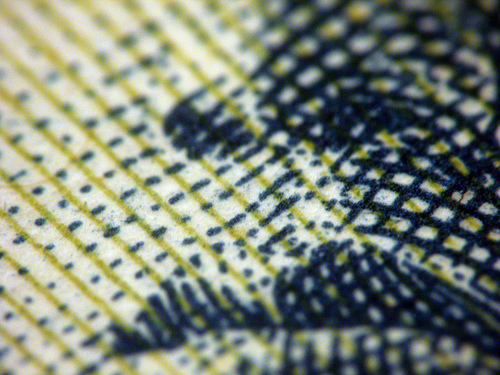Debit cards a magnet for fraud

Debit card fraud has increased dramatically in the year to June 2010 thanks to an explosion of ATM skimming.

(Paper money extreme macro image
by Kevin Dooley, CC2.0)
The cost of skimming fraud has rocketed by 94 per cent to more than $22 million since 2009 and accounts for 79 per cent of debit card fraud.
Debit cards are vulnerable to ATM skimming, where fraudsters replace the terminals with devices capable of reading PINs and stealing account information from the magnetic strips.
Figures from the Australian Payments Clearing House show incidents of fraud on magnetic stripe debit cards used for EFTPOS PIN transactions have jumped to about three in every 1000 transactions, or some 84,000 in the year ending June 2010.
The cost of that fraud over the same period has risen to close to $28 million, from 7.4¢ to 10.7¢ in every $1000 transacted.
An industry source told the Australian Financial Review that the spike in ATM skimming was caused by a string of scams targeting McDonald's restaurants in which criminals replaced handheld EFTPOS devices with replicas capable of transmitting account details via Bluetooth.
But the same figures show the cost of fraud affecting credit cards with embedded chips has dropped from 60.1¢ to 58.6¢ in every $1000 transacted, and the likes of Visa and MasterCard are chuffed.
"This is great news for cardholders and merchants alike and shows that the industry investment in chip is paying off," Visa's local general manager Chris Clark said.
The clearing house is more sobering; it points out that while the cost of credit card fraud has dropped, the amount of fraud has increased.
It attributes the rise to moves by banks to lower the threshold value of fraud investigated, meaning banks will detect more but cheaper fraud.
The drop in the value of fraud detected coincides with a push by MasterCard and Visa to drive the use of contactless credit cards such as payWave and PayPass, which bypass identity confirmation measures for transactions less than $100.
The system uses a fast wireless system to process the transactions and does not transmit account information, according to the system's developers.
While fraudsters have moved away from scamming credit cards, they are having a field day with vulnerable online shoppers.
Fraud targeting internet, mail or phone shoppers — where citation of credit cards is not required — has surged by 25 per cent to $102.6 million.
It accounts for more than half of all frauds on credit, debit and charge cards, according to the clearing house.
The clearing house said better IT security in line with adherence to the Payment Card Industry Data Security Standard is critical to reduce online so-called card not present fraud.
The house's chief executive officer Chris Hamilton said that Australia had a lower incidence of fraud than other nations: "Australia [is] less attractive for fraudsters from other countries."